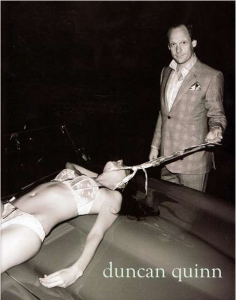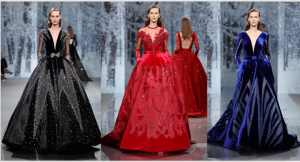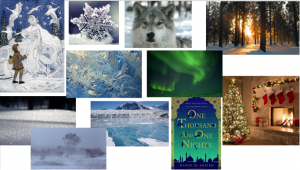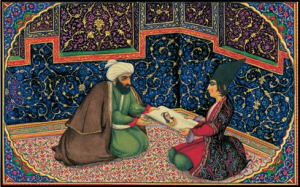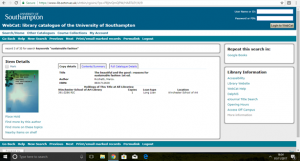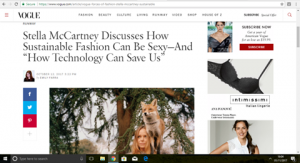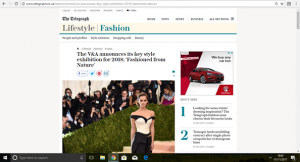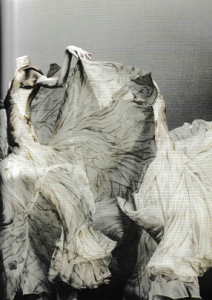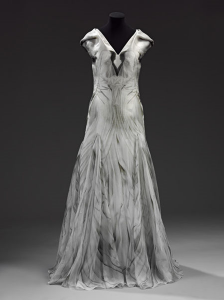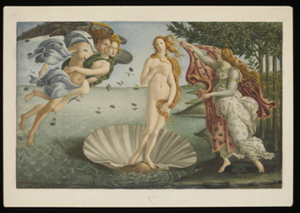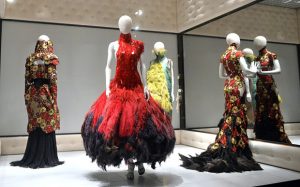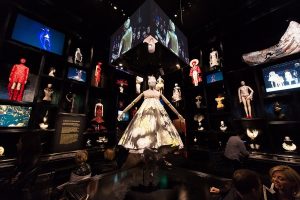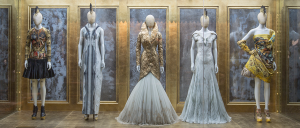This task is the summery of the previous tasks that have been completed, which were useful in developing writing, researching and evaluative skills which are paraphrased here for this the sixth and final task.
For task 1 I used my favourite image from my books titled ALEXANDER MCQUEEN edited by Claire Wilcox and used the internet to find the original inspiration for this piece. This task was beneficial as I learned how to use the internet wisely, which is something I can continue with future projects, as I found a blog with quotes from Sarah Burton that provided vital information to complete this task. However, my research was not very focused, as I researched too many websites that did not aid my work. Although, this trial and error was useful to learn from.
Task 1 link – (http://blog.soton.ac.uk/rcs/2017/10/19/task-12-research-and-communication-with-lyanne/)
For task 2 I had to learn how to reference three sources; A book, website/webpage and newspaper/article. It was difficult to link each reference together with a common theme however, I decided to complete this task backwards because the newspaper gave me artists which allowed me to find a book that uses a common theme. This process will benefit my studies as using references that linked focused my searches. Also learning how to reference properly has been useful and I can now reference quickly.
Task 2 link – (http://blog.soton.ac.uk/rcs/2017/12/03/task-12-online-resources-3/)
For task 3 I interpreted the inspiration for Ziad Nakad’s 2017/18 collection. I found it difficult to interpret the inspiration as many blogs I visited used the same text. My researched became over-complicate which prevented me from finishing. However, I spoke to my lecturer and I was able to finish that day. This was a beneficial task to complete because I didn’t realise how many sources could be used, as I previously studied many different images of the same inspiration rather than looking else wear. I also learned how contrasting sources can complement each other.
Task 3 link (http://blog.soton.ac.uk/rcs/2017/12/03/task-34-academic-integrity-2/)
For task 4 I wrote a reflective summery regarding the original and changing definition of fashion. This task was difficult because of the reading involved, also sourcing a book with appropriate quotes was difficult because of my dyslexia. To help I looked at examples on the WSA blog to source useful books. However, though this task was difficult it was interesting to learn the etymology of fashion as I agree fashion is the process of making and not just wearing.
Task 4 link – (http://blog.soton.ac.uk/rcs/2017/12/04/task-56-visual-research-7/)
For task 5 I wrote an analysis of an ad campaign. The reason I chose the specific image I researched was because it involved a man and women, which I felt I could more easily look at the man’s point of view. This was useful because it makes me think about if the product is being featured well, as with this ad I felt it was being forgotten amongst the controversy.
Task 5 link – (http://blog.soton.ac.uk/rcs/2017/12/04/task-78-reflective-writing-4/)
In conclusion, paraphrasing these tasks has made me understand the knowledge I have gained. It’s been difficult however, I have enjoyed this module and it has provided me with skills which I can use for future projects.

